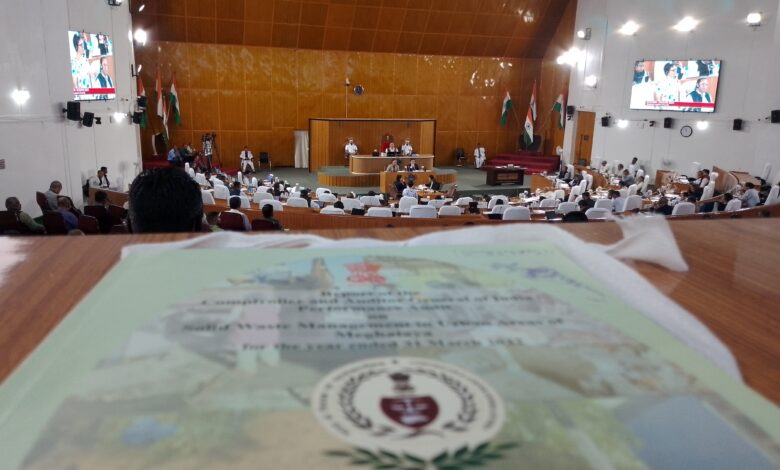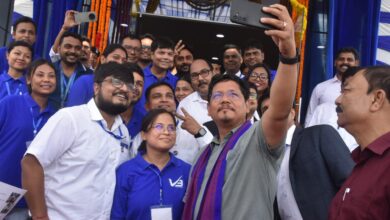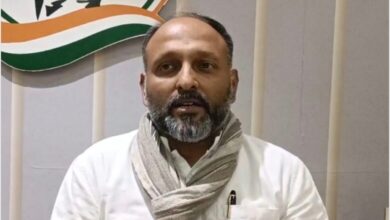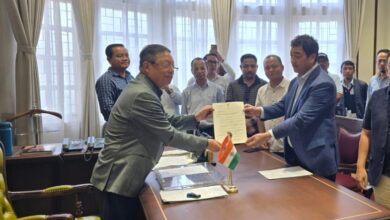
Shillong, Aug 30: The function of Municipal Waste Management in Meghalaya is severely hampered due to weak institutional mechanism coupled with none of the multiple agencies involved in this process being compliant with the responsibilities assigned to them under the Meghalaya State Waste Management (SWM) Rules.
This was revealed in the report of the Comptroller and Auditor General of India- performance audit on Solid Waste Management in urban areas of Meghalaya for March 31,2022.
The state waste management functions are further hampered by the fact that though a state wise policy has been put in place, none of the agencies involved, i.e. Municipal Boards, Cantonment Board (in Shillong) and Autonomous District Councils had formulated their Bye Laws respectively. The Town Committees were found to be practically non-existent as a result of which habitations covered under the census towns were completely deprived of functional waste management systems. At the government level, Urban Affairs department was hamstrung with lack of data on municipal waste generation to be in any position to take effective policy based initiatives to handle the municipal waste scientifically and effectively. Periodic Surveys for assessment of waste generation was not conducted in the test checked Urban Local Bodies (ULBs)/Town Committee except in Shillong. As a result, inaccurate methods of evaluation such as per capita estimation and estimation of quantity of transported waste was adopted in Tura and Jowai. Data was unavailable for Nongpoh Town with regard to waste generation, segregation, collection, and disposal from 2017-18 to 2020-21. Similarly, Meghalaya State Pollution Control Board (MSPCB)’s role making effective intervention in controlling pollution in and around dumping ground seemed ineffective since it had no reliable data on waste generated and collected. Waste Management Plans (either short term or long term) were not prepared in the test checked ULBs/Town Committee except for Shillong Municipal Area, where a City Solid Waste Action Plan had been prepared by the Shillong Municipal Board (SMB) but the same was still awaiting approval. A contingency plan was neither envisaged in the Meghalaya State Waste Management Policy and Strategy nor addressed by any of the test checked ULBs/Town Committee. These delays in preparation and approval of requisite legislations and plans had inhibited the implementation of SWM activities. Further, shortage of supervisory staff in the Municipal Boards and Town Committees as well as lack of trained staff for collection and transport of municipal waste resulted in unscientific management of municipal waste in the urban areas. Analysis of financial resources for the solid waste management in Meghalaya has brought out that over a period of previous five years, bulk of the financial resource has been received under the Asian Development Bank’s external funded project of NERCCDIP. However, the NERCCDIP funding agreement being for a period of 10 years and for specified activities, this remained a finite source of fund.
Shortage of funds
The Municipal Boards were unable to meet even the operational costs of collection and disposal of municipal waste due to poor collection of user charges. In the absence of any significant budgetary support from the state government, and lack of own funds in the Municipal Boards, the SWM activities in Meghalaya suffer from paucity of funds. Segregation of waste at different levels was either absent or partial in all the test checked ULBs. Segregation of domestic hazardous waste was not done and sanitary waste was not collected separately.
Mixed wastes seht to landfills
Hence, mixed waste was transported to landfills. Household bins for source segregation were purchased and distributed only in Shillong and Jowai but not in Tura and Nongpoh. Even though bins were distributed in Jowai, source segregation of waste had not yet been carried out. During joint physical verification, majority of the workers handling waste were not utilising the available safety equipment even though protective gears were procured by the ULBs.
Vehicles not covered
The vehicles were not covered during transportation resulting in foul odour emanating from the uncovered waste None of the available vehicles were equipped with Management Information Systems such as GPS and GIS, due to which tracking of transportation vehicles was not carried out. Processing of municipal waste and its scientific disposal have emerged as the weakest links in the state’s solid waste management system. In Shillong urban areas only 20 per cent of waste collected was processed through composting plants while in other urban areas the extent of waste processing was negligible. The grave situation of solid waste processing and disposal was caused by two key factors, namely, one that most of the municipal waste ended up in landfill sites untreated, and two, that the landfill sites were either grossly inadequate to handle the burden on dumping or were entirely absent, resulting in dumping of untreated waste in ad hoc dumping sites The value chain in solid waste management was practically non-existent as composting was unsuccessful due to poor waste segregation practices. Failure to make the compost plant functional under SWM project rendered the expenditure incurred on these plants unfruitful. Little incentive was visible for informal sector to be involved in waste segregation.
Poor medical waste management
Health care institutions were functioning without authorisation and unauthorised disposal of biomedical waste and e-waste was observed in Tura Municipal Board (TMB). Shillong Municipal Board (SMB) was imposed a fine amounting to 20.82 crore as Environmental Compensation by the CPCB due to non-compliance to BMW rules 2016. The accuracy and reliability of data in the annual reports submitted with regards to BMW was not verified by MSPCB. Similarly, annual reports submitted by ULBs regarding plastic waste generation were found to be inconsistent with the data generated by Central Pollution Control Board (CPCB). In addition, the list of bulk generators of e-waste maintained by MSPCB did not include various central and state offices and other institutions and an inventory of e-waste generation was not maintained. There are only three registered Producer Responsibility Organisation (PROs) for collection of e-waste in Meghalaya. Infrastructure for the efficient management of Plastic waste and C&D waste was non-existent in all the test checked urban areas.
Recommendations
Recommendation 1: The State Government may ensure that the required Bye laws under the Solid Waste Management Rules, 2016 are framed and implemented by the ULBs and ADCs in the State. The State Government may take up the matter with Shillong Cantonment Board for effective implementation of the SWM Act and Rules.
Recommendation 2: The Urban Affairs Department needs to assist ULBs/ local traditional bodies involved in SWM for preparation of Long-term. Mid-term and Short-term action plans to enhance the efficacy of solid waste management.
Recommendation 3: The Urban Affairs Department should encourage and promote involvement of informal sector in solid waste management (SWM) activities to increase efficiency of SWM.
Recommendation 4: Considering the intricate administrative framework encompassing agencies engaged in solid waste management (SWM) activities within urban areas of Meghalaya, it is imperative for the State Government to establish robust coordination among these entities and ensure vigilant monitoring of the diverse provisions pertaining to SWM.
Recommendation 5: Necessary steps should be taken for augmentation of sustainable financial resources of the Municipal Boards including system of collection of user charges and for strengthening their administrative capacity by recruiting the required manpower and imparting regular training to them to improve efficiency and effectiveness in solid waste collection, transportation and processing.
Recommendation 6: The State Government should encourage segregation of waste at source by devising a system for incentivising waste generators and collectors.





